U.S. Department of Transportation
Federal Highway Administration
1200 New Jersey Avenue, SE
Washington, DC 20590
202-366-4000
Arizona's First Prefabricated Bridge Improves Historic Route 66
Integrating Permitting Processes to Speed Up Project Delivery
The Power of People in Advancing Innovation
Road Safety Audit Helps Missouri Target Safety Investments
Using Ultra-High Performance Concrete to Build Bridges Better
Most people know it as the Main Street of America or the Mother Road, but residents of Mohave County, AZ, know historic Route 66 as the road that floods. Among the numerous at-grade wash crossings along the 90-year-old road is the Sacramento Wash, which encompasses a large watershed near the town of Topock and is particularly notorious for running over the highway.
“It is a linkage that when obstructed by severe weather events, like the monsoon-type storms we get in the summer, caused road closures of many hours and sometimes days,” said Steven Latoski, Mohave County public works director.
The rural two-lane road flooded 33 days during a 2-year period, causing a 24-mile detour each time and costing motorists an estimated $33,000 a day.
“We wanted to relieve the county of that ongoing burden of road closures due to flooding,” said Latoski. “We also saw a wonderful opportunity with accelerated bridge construction (ABC) under the Every Day Counts initiative to minimize the duration of a hard road closure to build a bridge.”

Trucks transported prefabricated bridge sections to the work zone for installation. Credit: Mohave County, AZ
In addition to the tight schedule and rural location, another challenge was the limited right-of-way—50 feet on either side of the centerline. “Normally we would like to have at least double that amount of space to work in,” said ADOT Senior Project Manager Rashidul Haque. “We found a piece of equipment that could turn almost 360 degrees. There are technologies available to help us reach our goals. We just have to research and find them.”
Engineers planned for a 4-day road closure, but crews completed the project faster in about 3.5 days, or 87 hours. A typical ABC bridge replacement project often can be done faster, but because this was a new bridge, the contractor had to construct the approaches. “According to the contractor, the actual bridge construction time was about 30 hours,” said Latoski. “It was the road construction that was actually the bulk of the work—80 hours.” Conventional bridge construction would have required an 11-week closure.

An Ohkay Owingeh road crew used GRS-IBS to replace the White Swan Bridge. Credit: Spokane County, Washington
“I give the contractor tremendous credit because the company built in so many redundancies in the types of supplies that they had on hand,” said Latoski. “They staged the same materials on both sides of the wash in case of a rain event. This prevented them from being cut off from accessing their critical materials.”
Total cost of the project was $2.9 million. The project received $1 million from the Federal Highway Administration’s Accelerated Innovation Deployment Demonstration program and Mohave County funded the rest. Mohave County engineers estimate using ABC with prefabricated bridge elements saved $2.6 million in expense to motorists had there been an extended detour period under conventional bridge construction methods.
FHWA, ADOT, and Mohave County partnered on a demonstration showcase to coincide with construction. More than 80 participants came from State and county agencies—including the Illinois State Toll Highway Authority and the California, Nevada, and Utah Departments of Transportation—and private industry to view ABC in action.
“ADOT is working to develop standard ABC drawings and specs to help expedite projects like this in the future,” said Haque. ADOT is also considering another ABC project with prefabricated elements that is now in design.
Three reports document Accelerated Innovation Deployment (AID) Demonstration projects that received funds to use accelerated bridge construction technologies to save time and money.
The White Swan Bridge Replacement report discusses lessons learned on an Ohkay Owingeh Tribe project in New Mexico that used a geosynthetic reinforced soil-integrated bridge system (GRS-IBS) and precast superstructure.
Gifford Pinchot National Forest Layout Creek Bridge Project describes a U.S. Forest Service project in Washington that deployed GRS-IBS and a superstructure designed with prefabricated prestressed concrete beams.
In Slide-In Bridge Construction Project Over 3 Mile Road, the Michigan Department of Transportation explains the selection of slide-in bridge construction as a cost-effective way to reduce traffic disruption and increase safety on the project.
See more AID Demonstration project reports in which agencies and tribes describe their experiences with innovation.
View a video of accelerated construction of a bridge over the Sacramento Wash in Arizona.
Credit: Arizona Department of Transportation
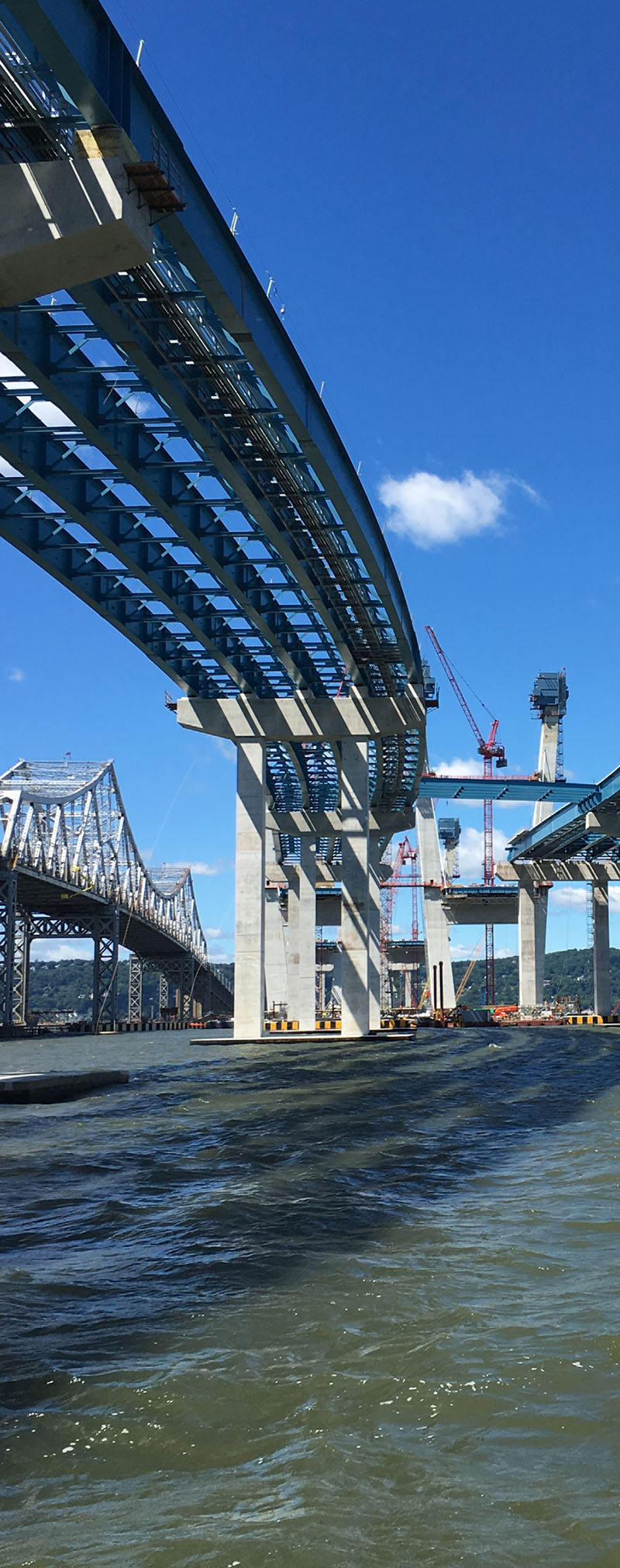
Integrating environmental reviews and permitting can lead to more efficient and effective delivery of transportation projects.
Many transportation projects require multiple Federal permits and reviews to ensure agencies build them safely and responsibly and minimize impacts on communities and the environment. But securing those permits can add time and costs to the project delivery process.
Integrating National Environmental Policy Act (NEPA) and permitting processes—a strategy the Federal Highway Administration is encouraging in Every Day Counts round four (EDC-4)—enables concurrent, synchronized environmental and permitting reviews. Synchronization provides for more effective and efficient reviews, leading to projects with reduced environmental impacts and time and money savings.
“Integrating NEPA and permitting is all about accelerating the permitting process,” said Gloria Shepherd, FHWA associate administrator for Planning, Environment, and Realty.
Fourteen States and Federal Lands Highway plan to demonstrate and assess tools to integrate NEPA and permitting processes in EDC-4. Another 15 plan to make integrating NEPA and permitting processes on projects a standard practice.
“Part of integrating NEPA and permitting is to reduce redundancy so we’re not doing the same thing over and over again,” said LaTonya Gilliam, Environmental Stewardship Program manager for the Delaware Department of Transportation, which has set a goal of demonstrating NEPA and permitting processes during EDC-4.
Integrating NEPA and permitting builds on earlier EDC efforts to streamline project processes through programmatic agreements to handle routine environmental requirements and improving collaboration and quality environmental documentation. The EDC-4 approach features proven best practices, data management, and tools to help agencies develop new or leverage existing integration practices and facilitate interagency coordination on projects.
One tool FHWA is promoting is eNEPA, an online system that supports timely, consistent coordination among agencies on permitting processes. The newest version, eNEPA 2.0, includes customizable workflows, improved document review functions, and a dashboard function.
Another tool is the 2015 Red Book: Synchronizing Environmental Reviews for Transportation and Other Infrastructure Projects.
“The Red Book is the how-to guide on integrating and synchronizing projects,” said Mike Ruth, FHWA ecologist and leader of the EDC-4 team on integrating NEPA and permitting. “It’s one of the best resources if you’re considering improving the processes you have or developing something new. It has something for everyone.”

Using integration strategies enabled the New York State Thruway Authority to accelerate the process of obtaining permits for the Tappan Zee Bridge replacement project. Credit: New York State Thruway Authority
The authority collaborated with the New York State Department of Transportation, FHWA, and resource agencies—including the Army Corps of Engineers and National Marine Fisheries Service—on the following strategies to accelerate project delivery:
As a result, the project progressed from notice of intent to record of decision in 11 months and obtained permits in 18 months, a process that typically takes years for large projects.
The project demonstrates the benefits of integrating NEPA and permitting processes on big projects, but the strategies can also be applied at the program level, to small projects, or to parts of large projects. “One of the beauties of this approach is that it’s scalable,” said Ruth.
Watch an EDC-4 webinar on integrating NEPA and permitting processes.
Visit the Integrating NEPA and Permitting Resources Library for case studies, tools, State agreements, publications, and presentations.
See the FHWA Environmental Review Toolkit for information and resources.
Contact Mike Ruth of the FHWA Office of Planning, Environment, and Realty for information and technical assistance.
Innovation is key to helping the Kentucky Transportation Cabinet (KYTC) achieve its goal to make transportation better for people, says Assistant State Highway Engineer Jason Siwula.
“Our mission is to provide a transportation system that delivers economic opportunity and enhances the quality of life in Kentucky. We want to make it a safe, efficient, environmentally sound, and fiscally responsible system,” Siwula told participants in a national State Transportation Innovation Council (STIC) webcast in April. “Innovation helps us deliver these outcomes to our citizens.”
Kentucky’s STIC, one of three recipients of 2016 STIC Excellence Awards from the American Association of State Highway and Transportation Officials and Federal Highway Administration, enables public and private transportation stakeholders to partner on innovation deployment.
“It allows groups to work together on an issue instead of in silos,” Siwula said. “It makes it possible to advance innovation more quickly.”
Siwula cited the Kentucky Utilities and Rail Tracking System (KURTS), a Web-based system that allows utilities and railroads to access and contribute information on KYTC projects, enhancing transparency and collaboration. KYTC, which received STIC Incentive funds to develop the system, collaborated with railroads, utilities, FHWA, and others on the project.
Now KYTC is sharing the KURTS concept with other States. “We hope this system is something that will be of use to others,” said Siwula.
Butch Waidelich, FHWA acting deputy administrator, opened the STIC meeting by reinforcing FHWA’s commitment to collaborating with States to implement innovation.
“The STIC network has become a very powerful tool,” he said. “With our collective approach, we’re accelerating innovation and it’s helping the entire Nation.”
David Esse, Wisconsin Department of Transportation (WisDOT) innovation officer, discussed how his agency fosters a culture that encourages people to innovate.
In addition to working with external stakeholders through the Wisconsin STIC to advance innovation, WisDOT formed an internal Innovation Review Committee to evaluate ideas. Committee members represent agency functions such as traffic operations, project development, and information technology. “Having this multidisciplinary approach has been beneficial for quickly vetting ideas and getting the ball rolling,” Esse said.
WisDOT also assembled local teams to include frontline staff in the innovation process. “This allows us to understand their needs at a grassroots level,” Esse said. “It also enables us to keep track of what each region is working on and align resources so we’re not duplicating efforts.”
The number of innovative ideas contributed by WisDOT staff grew from 14 in 2014 to more than 80 in 2016, but more important than the metrics is that “people are really getting involved,” Esse said. “Technologies and projects will come and go, but if we can change the culture at the grassroots level and get management buy-in and long-term support, there’s very little we can’t accomplish.”
Esse’s national STIC meeting remarks echoed his presentation at a STIC workshop at the 2016 Transportation Research Board Annual Meeting.
“The idea behind the TRB workshop was to enable participants to discuss elements of successful STICs,” said Sara Lowry, program coordinator for FHWA’s Center for Accelerating Innovation (CAI). Lowry encouraged STIC members to view the workshop videos and share their own STIC success stories and ideas at innovation@dot.gov.
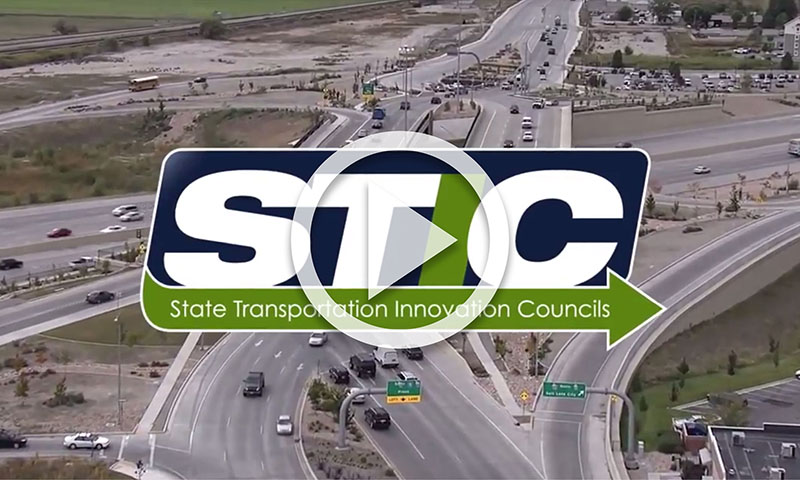
View a video on how STICs build innovative cultures in States. For more videos on advancing innovation through STICs, see the STIC playlist.
Jeffrey Zaharewicz, CAI senior advisor, introduced an Education Connection initiative in which Every Day Counts innovation teams are developing tools high schools, trade schools, colleges, and universities can use to educate future transportation practitioners through approaches such as YouTube videos, TED-style talks, class lectures, and workshops.
“At the high school level, our idea is to be inspirational, to get a young person who might be captivated by one of our innovations to pursue a career in transportation,” said Zaharewicz. “Our goal at the collegiate level is to provide an introduction to some of the cutting-edge practices the incoming transportation workforce will use.”
Deployment teams will travel throughout the country in 2017 and 2018 to offer training, hold peer exchanges, and provide tools to help the transportation community implement the innovations in Every Day Counts round four, said Tony Furst, FHWA chief innovation officer. “Please look for opportunities to attend these events and partner with other States in the STIC network,” he said.
A diverse team of transportation and law enforcement professionals took a focused approach to solving safety issues along a busy Missouri highway corridor.
Multiple wrong-way crashes, including a double fatality, had occurred on the 100-mile stretch of State Route 54 between the cities of Camdenton and Mexico, prompting the Missouri Department of Transportation (MoDOT) to conduct a road safety audit (RSA).
“Our goal was to conduct a thorough examination of the route to see how we could improve safety along the corridor,” said MoDOT Central District Engineer David Silvester. “We felt an RSA was the right thing to do.”
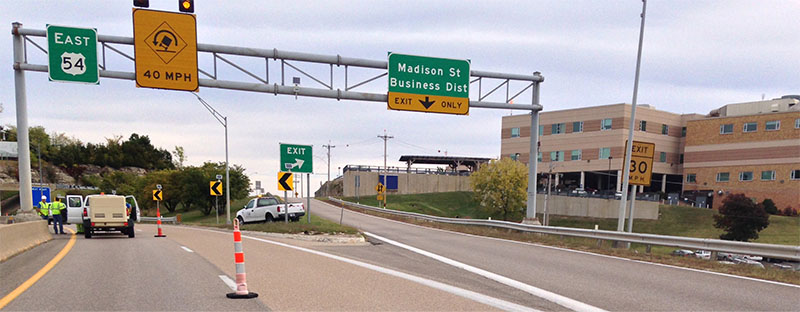
After completing installation of high-friction surface treatment in the right lane of Missouri’s Route 54, left, workers set up to apply a treatment in the left lane. Credit: Missouri Department of Transportation
“RSAs are a great tool for getting to the root of roadway safety hazards,” said John Miller, MoDOT traffic safety engineer. “The opportunity for a group to focus on a specific corridor and formally assess it from a safety perspective is invaluable for developing long-term solutions.”
The audit team isolated and examined three crash types occurring frequently on the roadway—wrong-way, curve, and cross-median. The team started by analyzing crash data for the period between January 2011 and July 2016.
“We made three binders, one for each crash type,” said Trent Brooks, MoDOT central district traffic engineer. “That organized the data so we could audit the roadway systematically.”
Once crash locations were identified, the team loaded into a van and drove the corridor to visually inspect them and other locations with similar characteristics.
“Jefferson City is roughly in the middle of the audit roadway, so we started there and drove either way,” said Brooks. “Because we knew the types of locations where severe crashes had occurred, we were also able to identify similar locations that were at risk.”
The focus on examining specific crash types and roadway features made the project more manageable.
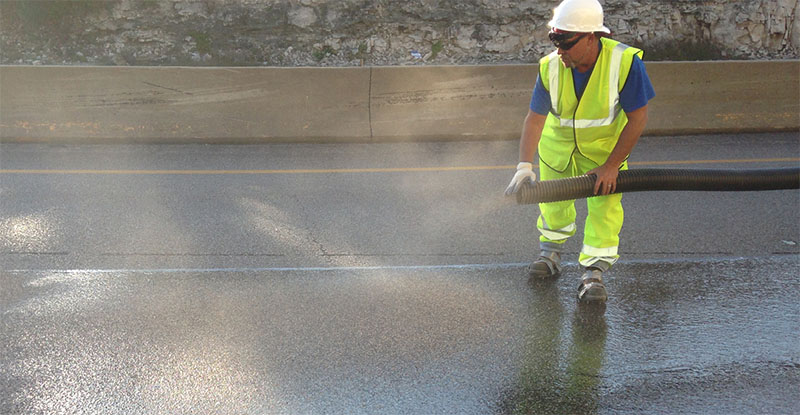
A worker applies high-friction surface treatment to increase traction on a Missouri road segment. Credit: Missouri Department of Transportation
The RSA team included MoDOT engineering, management, and communication practitioners, as well as staff from the Federal Highway Administration and Missouri State Highway Patrol. The variety of perspectives made the group—and the audit—more effective.
“Having people from different areas of expertise brought issues to light that we probably wouldn’t have noticed otherwise,” Brooks said. “As we drove the length of roadway, someone would call out a location or roadway feature that the others didn’t see. Then we could collaborate in real time.”
Based on the audit’s findings, the team recommended cost-effective countermeasures for the trouble spots, including chevron signs on curves, median guard cables to mitigate cross-median crashes, and high-friction surface treatments (HFST). Promoted in Every Day Counts round two, HFSTs are polymer pavement treatments that can dramatically reduce crashes associated with friction demand issues, such as around curves.
MoDOT chose to apply HFST to seven curves on Route 54 because it had worked well in the past.
“We had used high-friction at a few pilot locations, with impressive results,” Miller said. “So we were confident it would help those additional curves.”
In the end, Silvester noted, the RSA helped MoDOT exceed existing safety standards.
“The audit found that the existing conditions on the Route 54 corridor met all State and Federal standards,” Silvester said. “However, we were able to identify additional safety enhancements that could further reduce incidents.”
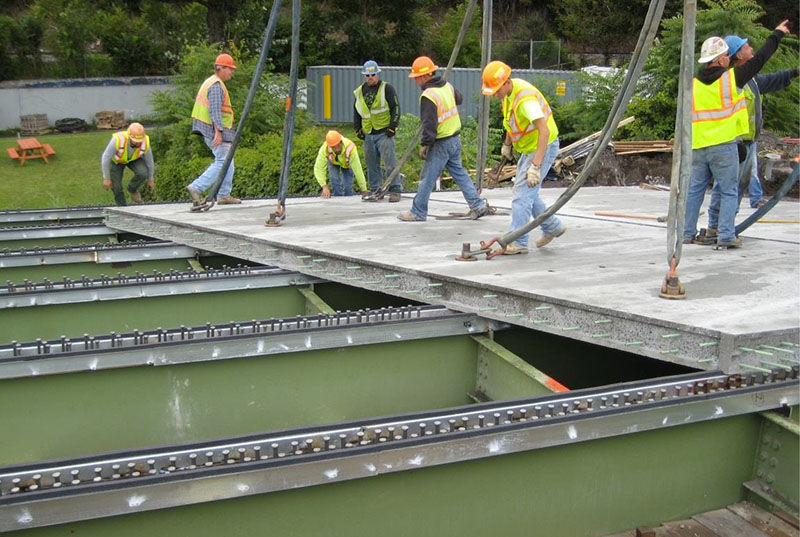
An Every Day Counts round four (EDC-4) innovation carried over from EDC-3, UHPC has been used in the construction of more than 150 bridges in North America, in most cases to make strong field-cast connections between prefabricated bridge elements (PBEs).
UHPC allows for small, simple-to-construct connections that require less concrete. The material’s mechanical properties enable the design of connection details in ways that promote ease and speed of construction with PBEs.
“UHPC is the next generation of concrete. It’s a new tool in the toolbox that lets us build bridges differently so they’ll give us the performance we demand,” said Ben Graybeal, FHWA Bridge Engineering Research Team leader.
In EDC-4, transportation departments in 22 States and the U.S. Virgin Islands as well as Federal Lands Highway plan to demonstrate and assess the use of UHPC connections in bridge-building processes. In another 10 States and Washington, DC, using UHPC connections on bridge projects that use PBEs is expected to be a standard practice by the time EDC-4 ends in December 2018.
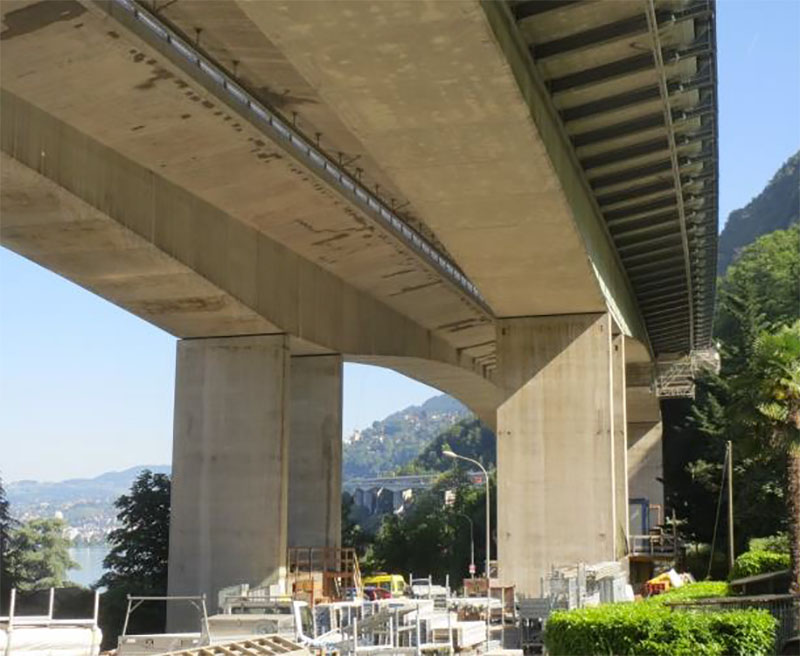
UHPC was used for bridge deck rehabilitation on the Chillon Viaduct near Lausanne, Switzerland.
The New Jersey Department of Transportation (NJDOT) used UHPC to connect precast deck panels on the Pulaski Skyway, the Nation’s largest accelerated bridge construction project. “With the implementation of UHPC, we were able to keep construction joints to a minimum in width and length, saving time and money and speeding up the project,” said David Hawes, NJDOT resident engineer for the northeastern New Jersey project.
In Iowa, UHPC was used on four projects to connect PBEs and on another four to prefabricate the components and then connect them. A project in Buchanan County was the first in the country to apply a UHPC overlay on a deteriorated bridge deck.
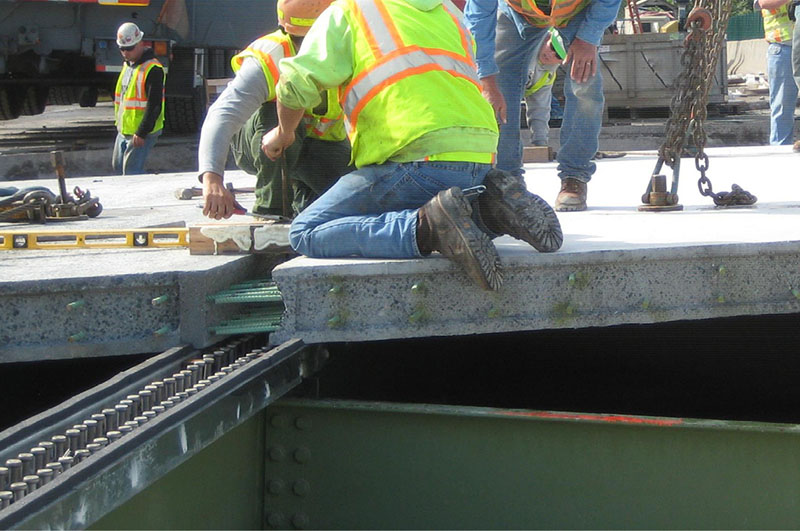
UHPC connections make using prefabricated bridge components simpler and more effective for accelerated bridge construction.
Several transportation departments have UHPC projects in the works or at the planning stage.
In South Carolina, work is underway on a four-span bridge in Kershaw County. One span uses precast modified North Extreme Tee Deck (NEXT-D) beams, developed by the South Carolina Department of Transportation (SCDOT) and Clemson University, with UHPC in the shear keyways between the sections. Two spans use hollow core precast slabs connected with UHPC. The fourth span uses precast, prestressed solid slab sections joined with UHPC. SCDOT is monitoring the durability of the different types of construction to glean information to apply on future projects.
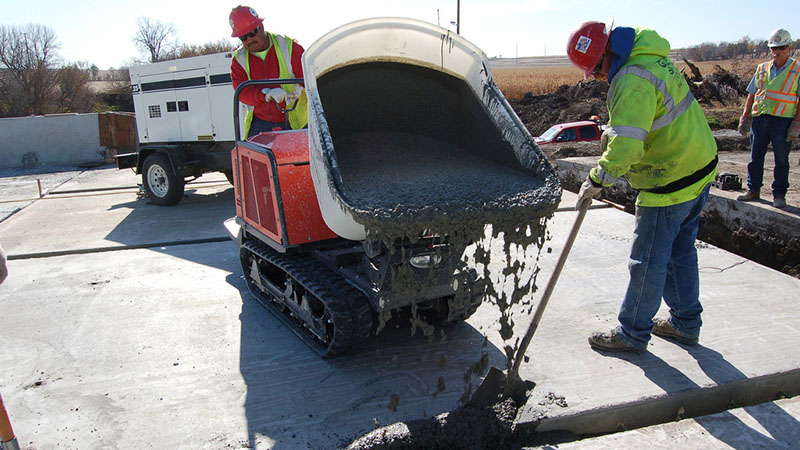
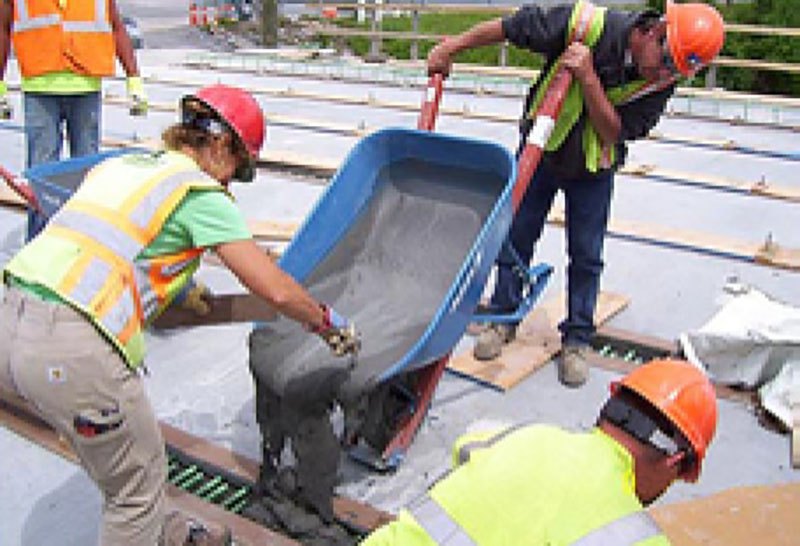
UHPC allows for small, simple-to-construct connections that use less concrete than conventional connections.
The California Department of Transportation identified two multispan structures for pilot projects using UHPC to connect precast columns to precast bent caps. Scheduled for 2017 construction, the projects will help the agency develop design details and guidance to quickly and uniformly implement accelerated bridge construction while mitigating project risk.
Watch a video on UHPC and its use on bridge projects in Minnesota and New York.
Register for upcoming webinars and watch recordings of past sessions in FHWA’s series on UHPC connections for PBEs.
See FHWA’s UHPC Web page for information on projects and research.
View an interactive map of transportation projects built in the United States and Canada using UHPC technology.
Contact Ben Graybeal of the FHWA Turner-Fairbank Highway Research Center or Mark Leonard of the FHWA Resource Center for information and technical assistance.
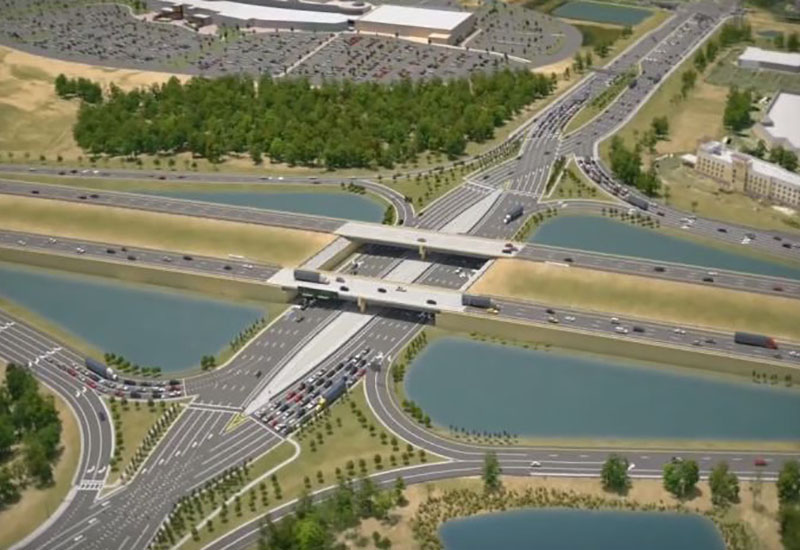
Credit: Florida Department of Transportation
Construction is underway on an Indiana Department of Transportation project to replace the I-70 bridges over State Route 121 near Richmond. The project, being built with accelerated bridge construction technologies, is the State’s second to use slide-in bridge construction, in which a bridge is built on temporary supports and slid into place. The project received Accelerated Innovation Deployment Demonstration program funds.
The Michigan Department of Transportation (MDOT) installed high-friction surface treatments (HFST) on mainline interstate lanes for the first time. MDOT applied HFST on a 1-mile stretch of I-94 in the southwest part of the State and on a quarter-mile section of I-75 north of Detroit. The agency started using HFST—pavement overlay systems with exceptional skid resistance—on Michigan roads and ramps in 2007.
The North Dakota Department of Transportation (NDDOT) is testing a fiber-optic traffic monitoring system on I-29 in Fargo. The equipment can detect real-time traffic speeds along the length of the fiber-optic cable buried next to the road and volume data at locations where the cable crosses travel lanes. This is the first North American test of the traffic monitoring capabilities of the system and the first global test of traffic counting. The system was identified through NDDOT’s Transportation Innovation Program, which received funding from the State Transportation Innovation Council Incentive program.
Seattle, WA, has a new high-tech tool to ease congestion along one of the city’s worst traffic bottlenecks—the Mercer Street corridor. The city introduced an adaptive signal control technology (ASCT) system that is expected to shave minutes off travel times between 3rd Avenue West and I-5. The ASCT system, installed at 32 signalized intersections, works in real time to sense changing traffic volumes and adjust the timing of green lights.
Innovator, published by the FHWA Center for Accelerating Innovation, advances implementation of innovative technologies and accelerated project delivery methods in the highway industry. Its audience is transportation professionals in highway agencies, trade and research groups, academia and the private sector, and the driving public.
Elaine L. Chao, Secretary, U.S. DOT
Walter Waidelich, Jr., Acting Deputy Administrator, FHWA
Thomas Harman, Director
Jeffrey Zaharewicz, Senior Advisor
Ewa Flom, Program Coordinator
Sara Lowry, Program Coordinator
Julie Zirlin, Program Manager
Nichole Causey, Marketing Specialist
Ellen Schweppe, Managing Editor
James Cline, Jr., Designer
Rebecca Taylor, Designer
Rodney Walker, Designer
Email reprint requests to Nichole Causey